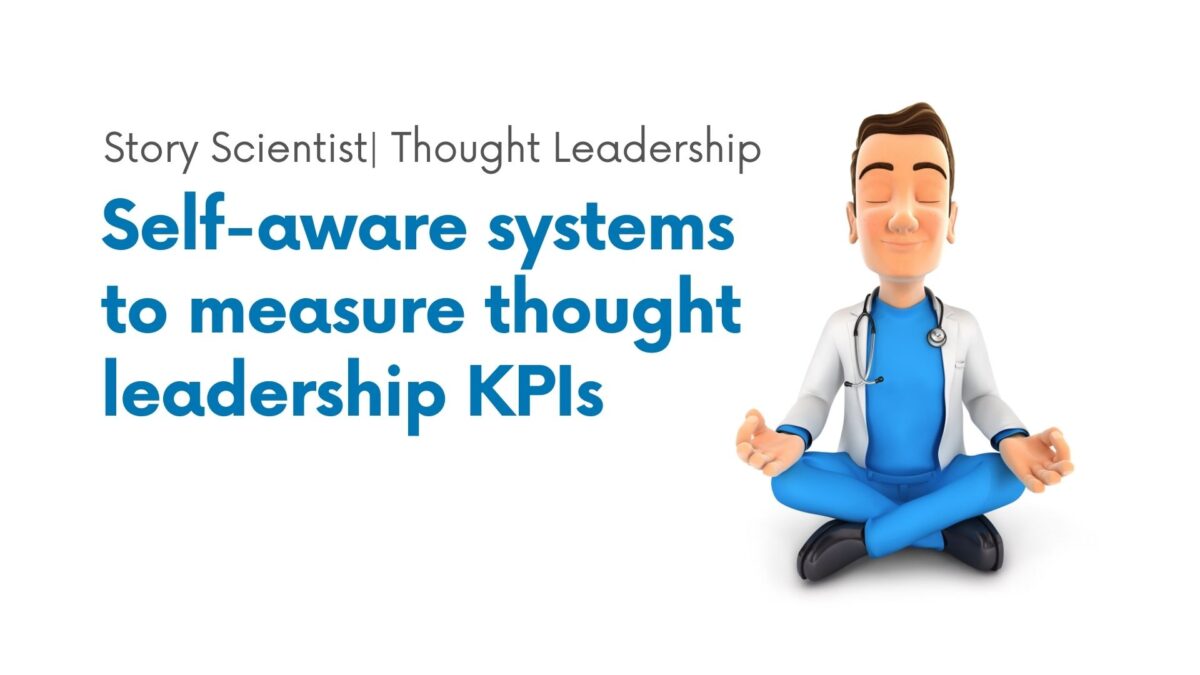Self-awareness bracketed as a spiritual act now turns out to be applied by scientists on machines. Self-aware systems can in fact measure thought leadership KPIs for better branding.
There is a famous story from Indian mythology about a half-monkey and half-human creature named Lord Hanuman. He goes in search of the abducted wife of his ally Lord Rama. They come to the tip of the Indian peninsula. Their search halts at this point because there is no one in the army who can cross the river and continue the search. Then, the commander of the army reminds the unaware Lord Hanuman that he was blessed with a boon as a child to morph himself and fly great lengths by merely believing that he could do so.
Lord Hanuman unaware of this strength would be sitting among the other soldiers assuming that the search comes to an end at the seashore. When he realizes his strength, he tries and realizes that he can shift shape and size and also can fly over the sea stretch to continue the search for the abducted wife.
While this is shelved for mythologists, there is a scientific twist to it.
Have you noticed how sensors work in an IoT environment? They receive data for specific parameters, process them, and act upon them based on their internal configuration. Let’s take a fire sensor for instance. It can sense heat, temperature fluctuations, and maybe sometimes smoke too. It then indicates to you on an app if something goes wrong or just informs you with data.
Over a conversation with one of my IoT clients, he mentioned that a major attribute for smart embedded systems is the notion of self-awareness. And think about it, this notion enables an embedded system to monitor its own state and behavior, also the external environment.
Self-awareness used in marketing and branding
Self-awareness is an existential behavior for marketing systems too.
The famous five stages of awareness listed by Eugene Schwartz in his book Breakthrough Advertising has got to do with being aware of each stage through which a customer improves awareness of your brand.
Self-awareness is also applied in marketing analytics. Analytics helps you be aware and find answers to questions like:
- Who is my audience?
- What do they need from me?
- Why would they like my product or service?
- Are they asking for something that I can give?
- Who are the people on my team who can help me achieve this?
- Where are they coming from? And a lot more questions
Think about it for a minute. When self-awareness can be applied to large organizations and machines, then why not for someone like us.
Thought Leaders measuring their KPIs
Dr.Taisha Eurich shares the 2×2 matrix that maps different levels of internal and external awareness. The idea is for you to reach the top right quadrant where you remain fully aware.
Being self-aware helps you receive inputs from around you, without any bias. Clear thinking on top of it, helps you process it and you could put it to good use.
So it is a cycle.
When you develop better self-awareness, you are able to articulate your thoughts better, both within and outside your company. This in turn adds more interest from people who discover you and your thoughts. If you had to run a thought leadership campaign and measure it, you would see that the metrics look like:
- No of media mentions
- No of followers
- No of early subscribers
- No. of content shares
- The reading or listening time
- Your influencer score and things like that.
Practices to help you stay more Self-aware
In a Forbes article by Steven Pfrenzinger… it goes like this “Self-awareness changes everything! It’s an entrepreneurial superpower; it’s an X-factor, but why? Because it takes us from thinking to knowing. That, in turn, gives us confidence and certainty. When we have certainty, we change, and everyone notices. We stand taller, our voice is deeper and we make better eye contact.”
Anthony Tjan, CEO-Founder and Managing Partner of a venture capital firm called Cueball, also the author of a best-selling book called Heart, Smarts, Guts, and Luck quotes in a Harvard Business Review article that “self-awareness is a critical factor for business-building success… The tougher code to crack is how to become more self-aware.”
And he lists down three steps to become self-aware as an entrepreneur or leader within your organization:
- The first one is Test and to know yourself better. Having a framework for self-awareness helps to bucket your strengths and weaknesses. Personality tests like Myers-Briggs, Predictive Index, and StrengthsFinder could be used.
- The second step is Watch Yourself and Learn. In another HBR article, (“Managing Oneself,”) Peter Drucker wrote, “Whenever you make a decision or take a key decision, write down what you expect will happen. Nine or 12 months later, compare the results with what you expected.” Drucker called this self-reflection process feedback analysis. Many successful people follow similar practices: Warren Buffett, for example, has made it a habit for years to write down the reasons why he is making an investment decision and later look back to see what went right or wrong.
- The third step is Be aware of others, too. Self-awareness is crucial when building a team. Knowing your natural strengths and weaknesses makes you a better recruiter and allocator of talent. But you also must be an acute observer of others’ strengths and weaknesses. Effective teams are made up of people who both understand and complement each other.
How has my life taught me to stay self-aware?
Fighting a season of severe anxiety and depression in March 2021, it was so important for me to practice self awareness. It can sometimes get worse than walking on a tight-rope 100 feet above the ground. You don’t know when your thighs start doing the shaky dance, you start swimming in your sweat, it’s scary.
It turned out later that being aware of the environment around me and inside me helps me gain that balance.
I have penned down them in four steps.
- #Pausing
- #Breathing
- #Re-settling
- #Moving away
The Mirror test
Also there is another popular technique, but not many apply. Probably because it sounds too simple. But, my mother taught me this technique when I was a child and it also helped me fight peer pressure. You could try it for your children too.
This is how it goes.
Stand in front of a mirror. When you can’t find an inner mirror, use a real one and you will see yourself in a different way each day. Warning: What you see would always be filtered by the perspectives that you carry for that day.
Self-awareness to me is not so much about what you wear on your body. It has much to do with what you wear on your mind.
Reading and references:


3 replies on “Building self-aware systems to measure thought leadership KPIs”
Thank you for any other fantastic article. The place else may anyone get that kind of info in such a perfect way of writing? I have a presentation next week, and I am at the look for such info.
Wonderful blog! Do you have any tips for aspiring writers? I’m planning to start my own website soon but I’m a little lost on everything. Would you propose starting with a free platform like WordPress or go for a paid option? There are so many options out there that I’m completely confused .. Any suggestions? Thanks a lot!
Linkedin is the best place to go.